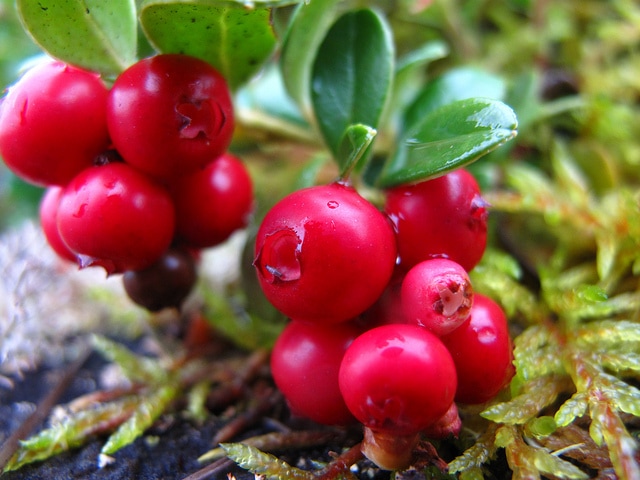Cranberries (Vaccinium vitis idaea) or red cranberries are part of the same family as blueberries. They grow in poor bushes, whose leaves remain green throughout the year. He prefers the colder climate and acidic soils.
The cranberries were first consumed as food by the American Indians, and later the English colonists included them in their recipes. They arrived in Europe around 1820, being successfully cultivated in the Nordic countries and Russia. In Romania, the cranberry is found throughout the Carpathian chain, but especially in the Apuseni Mountains.
What nutrients do the cranberries contain?
Cranberries contain sugars, vitamins A, B1, B2, C, E and K, citric acid, malic acid, benzoic acid (about 2%), tannin, vaccine (a glucoside), mineral salts of magnesium, potassium, and calcium dietary fiber and antioxidants.
When can I introduce the cranberries into my baby’s diet?
Because cranberries are acidic, but non-allergenic, like other forest fruits, it is recommended to put them in the baby’s menu from the age of 8 months. As with any new food offered to the child, seek advice from the pediatrician and follow the 4-day rule.
What benefits do the crannies bring to the body?
Cranberries are a treasure for the body because of its anti-infectives properties. Fruits are an effective treatment for cystitis and other urinary infections because they contain a substance that prevents the accumulation of bacteria in the tissues. Studies have shown that a glass of cranberry juice per day is ten times more effective in annihilation of urine bacteria than classical antibiotics.
Due to the very large amounts of antioxidants they contain, these fruits strengthen the immune system and are a hopeful help in diseases such as kidney lithiasis, gum infections, hypertension, and various types of cancer.
How do I choose and how do I keep my cranberries?
When buying fresh cranberries, the fruits must be whole, round, with no traces of kicks. Both the leaves and fruits can be dried and then stored in glass receptacles or sachets of textile. Cranberries can also be stored in water – at a temperature of 10-18 degrees Celsius. They can withstand even for one year without any other intervention because they contain benzoates, the natural and non-toxic version of the dangerous additive E 211 (sodium benzoate), with a strong preservative effect.
How is it prepared?
Cranberries can be eaten fresh or dried and rehydrated, in jams, juices, syrups, compotes. They are also used to prepare various sauces, cakes and even some meat dishes.
Sources:
http://en.wikipedia.org/wiki/Cranberry
http://www.whfoods.com/genpage.php?tname=foodspice&dbid=145
http://wholesomebabyfood.momtastic.com/cranberrybabyfoodrecipes.htm#.UQPwN79LN20
Photo by: https://flic.kr/p/daHBx7
